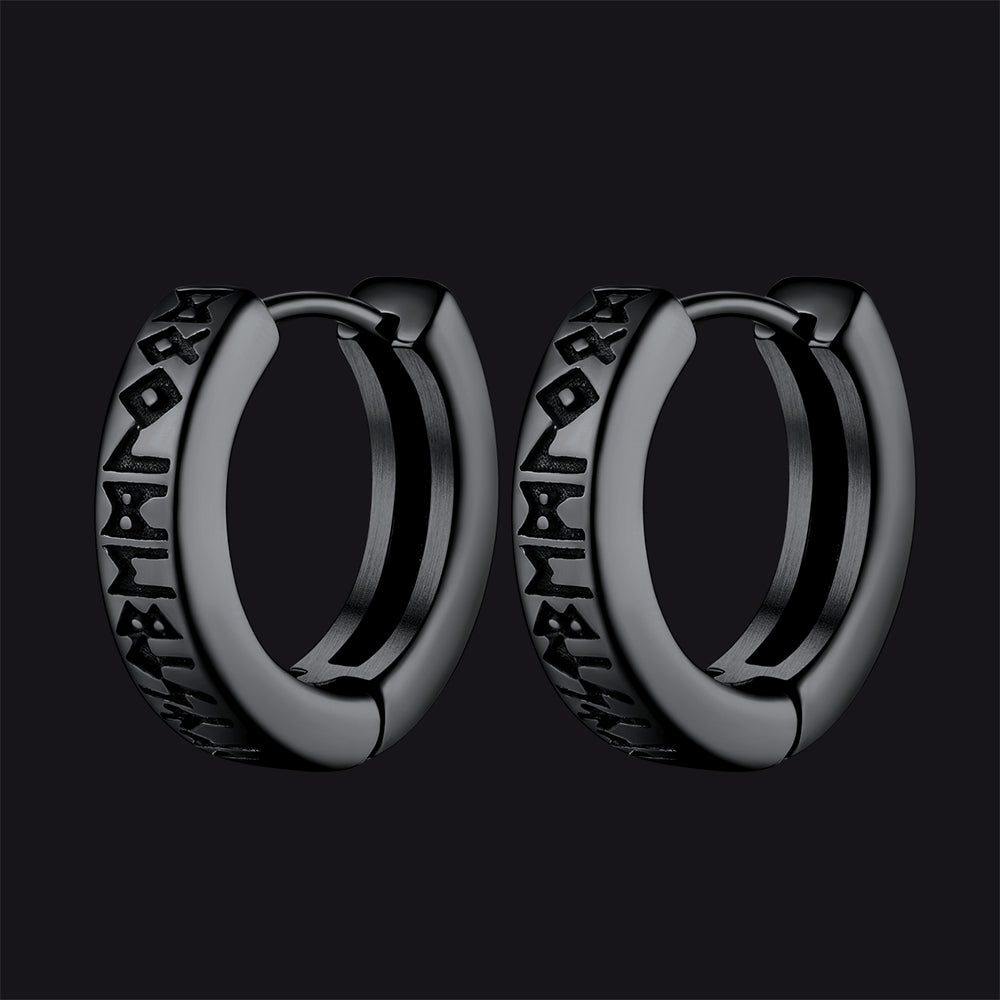How to Choose the Best Earring Size and Placement for Every Piercing
Key Takeaways
Selecting the appropriate earring size and placement is both an art and a science. Keep in mind the following key points:
- No one-size-fits-all: Your own ear anatomy and piercing location determine your ideal earring size and placement.
- Prioritize health and comfort: Proper jewelry during healing especially prevents problems.
- Balance style and practicality: Look for earrings that are lovely but easily suit your way of living.
- Trust the professionals: Your piercer is your best source of professional advice and proper fit.
Ever buy a new earring only to find it's too tight, too loose, or just doesn't look right in your piercing? Getting the size and placement correct is key to a comfortable and stylish look. Here, we'll cover post lengths, hoop diameters, and what styles work best on different parts of the ear, so you can pick pieces that feel like they were made for you.
The Basics of Earring Sizing You Need to Know
Before getting into individual piercings, let's go over the fundamentals of earring measurements. Knowing these terms will allow you to choose the proper jewelry when shopping online or at a piercing salon.

Earring Gauge
Gauge describes the thickness of the earring post or bar that passes through your piercing. It is normally measured in numbers, and this is where it gets tricky: the smaller the number, the thicker the earring. For instance, a 14-gauge (14g) earring is thicker than an 18-gauge (18g) earring. Most ear piercings start at specific gauges:
- Standard Lobe: Usually 20g or 18g.
- Cartilage Piercings (Tragus, Helix, etc.): Typically 16g or 18g.
- Industrial Piercings: Usually 14g.
Why does gauge matter? Wearing the wrong gauge can stretch your piercing, make it shrink, or even make it irritated. Always match your jewelry's gauge to your piercing's gauge.

Earring Length and Diameter
Length is used for studs or barbells and describes a measurement from one end of the post to the other. Diameter applies to hoops or rings and measures the distance across the circle.
Choosing the right length or diameter is important for comfort and also for avoiding problems. A stud that is too short may squeeze your ear and lead to swelling or irritation. One that is too long may catch on things or protrude awkwardly. With hoops, too small a diameter may pinch, whereas one too large may catch on things or look out of place. You can try to measure your own piercing using a ruler, but generally, it is easier to let the piercer do this to ensure a good fit.
Earring Backing Types and Their Impact

The type of earring backing will determine not only how secure your earring is but also its comfort and how it sits on your ear.
- Push-back (Friction Back): Common for standard studs. Simple to install and remove, but tend to loosen over time.
- Screw-back (Flat Back/Labret Stud): On one end of the post is a flat disc, and on the other, a small ball or ornamental top that screws onto it. Screw Back Earrings are very secure and comfortable to sleep in, particularly for cartilage piercings.
- Threaded (Internal vs. External): Describes the way that the ornamental end is attached to the post. Internally threaded jewelry is easier on your piercing, which irritates less. Externally threaded has threads on the post that can scrape the piercing.
- Lever-back: A back that is hinged and closes securely, often used for dangle earrings.
- Hinged/Clicker: A portion of the hoop hinges open and "clicks" closed, ideal for smooth hoops and rings.
For a new piercing, flat-back labret studs are generally advised since they're secure and have less chance of snagging.
Earring Size and Placement Guide by Piercing Type
Every spot on your ear calls for a different earring size to look its best and feel comfortable. Here's how to choose the right fit and placement for the most common piercings.
Lobe Piercings: Classic Style and Versatility
The lobes are the easiest and most versatile spot, offering plenty of styling freedom.
- Standard Lobe: Your main piercing is a great starting point. It fits standard studs (with 6mm to 8mm posts) and almost any hoop size, from a snug 8mm huggie to a bold 50mm hoop. If you have a few, staggering their placement up the lobe creates a beautifully balanced look.
- Upper Lobe: For piercings climbing up the fleshy part of your lobe, smaller is often better. Dainty studs or small hoops (typically 6mm to 10mm) prevent crowding and help build that popular "ear stack" effect.
Cartilage Piercings: Highlighting Your Upper Ear
These are the piercings on the firmer, upper parts of your ear, and they need more attention to detail regarding size and placement for proper healing and comfort.
- Helix (Outer Rim): This piercing runs along the upper, outer curl of your ear. Start with a labret stud or a captive bead ring (CBR). Once healed, you can switch to small hoops (6mm to 10mm) or keep a stud. The typical gauge is 18g or 16g.
- Forward Helix: These are the small, delicate piercings at the front of your ear where it meets your face. They look best with tiny, decorative studs on a flat-back post. They're perfect for adding a little sparkle right at the front without being too bold.
- Tragus: This piercing goes through the small flap of cartilage covering your ear canal. A short stud (6mm to 8mm post) with a flat back is the most comfortable choice, especially if you wear earbuds often. It keeps the jewelry from getting in the way.
- Conch: This is the large, bowl-shaped part of your inner ear. You have two main style options: a decorative stud placed in the center, or a large hoop (10mm or bigger) that wraps all the way around the outside of your ear for a dramatic look.
- Daith: This piercing is tucked into the innermost fold of cartilage. It most commonly uses a captive bead ring (CBR) or a specially shaped daith ring, usually in 16g. It's a very contained and unique placement.
- Rook: The rook piercing goes through the small ridge of cartilage above the daith. Curved barbells are standard for this piercing, typically in 16g and smaller lengths (around 6mm-8mm). Placement is deep within this fold.
- Flat/Outer Flat: This area is the flat surface of cartilage between the helix and the conch. It's perfect for showcasing decorative studs or clusters, often in 18g or 16g. The length of the labret stud will depend on the thickness of your specific cartilage, usually 6mm-8mm.
Industrial Piercing: The Bar That Spans Your Ear
An industrial piercing consists of two independent helix piercings joined by a single straight barbell. The piercing itself is typically 14g. The barbell length is extremely important; it needs to be individually made to measure your ear in order to prevent pressure points, which can cause irritation and healing issues.
Key Considerations for Choosing and Placing Earrings
Beyond the specific piercing types, some general rules apply to all earrings and piercings.
Healing: Start Big, Then Downsize
When a piercing is new, your piercer will use a longer post or a bigger hoop. This leaves room for the initial swelling, which is a normal part of healing. After the swelling goes down (usually in a few weeks or months), it's really important to go back to your piercer to get a shorter post or a smaller ring. This step, called "downsizing," prevents your jewelry from snagging on hair and clothes, which reduces irritation and helps the piercing finish healing properly.
Everyday Comfort and Practicality
If you're a side sleeper, you'll find that flat-back studs are much more comfortable than traditional butterfly backs, especially in cartilage piercings. Consider if large hoops or dangly styles will get in the way of your headphones, phone calls, or get tangled in your hair. Also, to avoid skin reactions, stick with high-quality, body-safe materials like implant-grade titanium, surgical steel, or solid 14k+ gold.
Creating Your Personal Style
Styling your ear is all about creating a balanced look. A big hoop in your first lobe can look great paired with a smaller hoop in your second and a tiny, sparkling stud in your helix. Longer dangle earrings can elongate a round face. Shorter, wider earrings might balance a long face. Consider how your earrings will look with your hair up or down. Don't be afraid to mix metals like gold and silver or to play with different colored stones to show off your personality.

When in Doubt, Ask Your Piercer
A professional piercer is your best resource. They can measure your ear to find the exact size you need, suggest jewelry that works best for your specific anatomy, and help you safely change out jewelry in tricky spots. If you ever have issues with irritation or aren't sure if your piercing is healing correctly, they should be your first call.
How to Care for Your Earrings and Piercings
A little care goes a long way in keeping your jewelry looking great and your piercings healthy.
- Keep Everything Clean: Gently wash your earrings from time to time with a bit of mild soap and water to remove any buildup of skin oils or hair products. For healed piercings, you can carefully clean around the jewelry to keep the area fresh and free of gunk.
- Check the Backs: Every now and then, make sure your earring backs are secure, especially if they are screw-on types. A quick check can prevent you from losing a piece of jewelry you love.
- Watch for Signs of Trouble: Pay attention to your piercings. If you notice any lasting redness, swelling, pain, or any unusual discharge, your ear might be irritated or infected. If things don't look or feel right, it's best to talk to your piercer or a doctor.
FAQ About Earrings & Piercings
Q1: Can I put a hoop in a new piercing?
Generally, no. Hoops allow for more movement, which can irritate a new piercing and delay healing. Straight barbells or labret studs are usually recommended for initial jewelry.
Q2: How do I find out my piercing's gauge size?
The safest way is to ask your piercer. They can accurately measure your piercing.
Q3: My earring keeps falling out; what should I do?
First, check the earring's backing to make sure it's secure. If it's a stud, the post might be too long for your healed piercing, allowing too much movement. Consider downsizing the post length or trying a different backing style, like a screw-back.
Q4: Can wearing the wrong size earring cause problems?
Yes. Jewelry that's too tight can cause swelling, irritation, or even embed in your skin. Jewelry that's too loose can snag, migrate, or fall out. Improper gauge can stretch or shrink your piercing.
Q5: How often should I change my earrings?
For healed piercings, you can change your earrings as often as you like, as long as your piercing isn't irritated. For new piercings, follow your piercer's instructions on when to downsize and when it's safe to change jewelry.
Q6: Is there a universal earring size?
No, there isn't one universal earring size. Sizes vary by gauge, length, and diameter, depending on the piercing location and individual ear anatomy.



